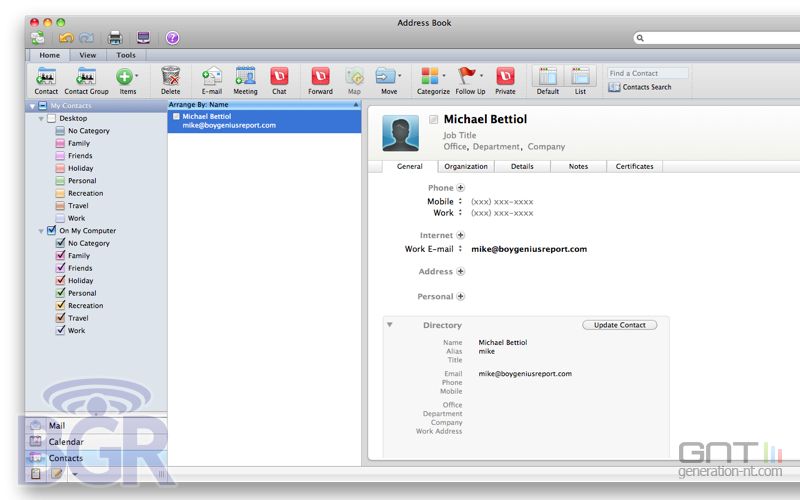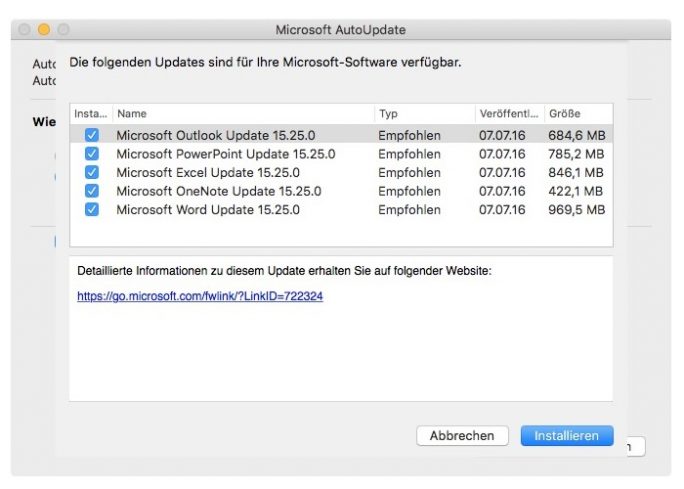Microsoft Office for Mac 2011 offers a solid update to the Word, Excel, PowerPoint, and the other members of the productivity suite. Though the latest package is still not on par with the Windows. Microsoft Office for Mac has recently started the rollout as a full-on 64-bit application, following an early announcement in April, about the imminent switch. The move to 64-bit has been a long time coming, since the last Apple 32-bit operating system was Mac OS X Panther, released over 11 years ago, and then succeeded by the 32-bit/64-bit enabled Mac OS X Leopard.
Follow these steps to completely uninstall Office for Mac 2011 from your computer. Office 2011 never had a 64-bit version and went out of support in 2017. Microsoft Office for Mac 2011 provides you with a familiar work environment, which is versatile and intuitive. The suite provides new and improved tools, which make it easy to create professional looking content. This coupled with improvements in the speed and agility of Microsoft Office for Mac 2011, makes for an impressive package.
-->Applies to:Office for Mac, Office 2019 for Mac
Apple has long encouraged application developers to adopt the 64-bit runtime environment, and we've been hearing from customers that 64-bit versions of Office for Mac are desirable to enable larger address spaces, better performance, and new innovative features. All releases of Office for Mac after August 22, 2016 are 64-bit only.
What does this change mean for me?
If you use Office for Mac but don't use any add-ins, you should be unaffected by this change.
If you use or develop add-ins in Office for Mac, you may need to update those add-ins to 64-bit.

I develop add-ins or write VBA for Office for Mac. What do I need to know?
The primary impact of this change is to compiled add-ins. Office add-ins (add-ins using the JavaScript-based APIs) are not impacted by this change.
The work required to update your add-ins for 64-bit will vary based on the code.
For example, any use of VBA's DECLARE statement to load external functions in compiled dynamic libraries will require that those libraries support 64-bit. The VBA code itself will continue to work as VBA is transitioned to 64-bit, but you'll need to update the external libraries.
If you need guidance on making this transition or have additional questions, please let us know by emailing Office64@microsoft.com and we'll be glad to help.
FINAL UPDATE: AUGUST 23, 2019.
Choose the bit-version that's best for you, but be careful about thinking one is always better than the other. If this doesn't make sense, then please read-on..
UPDATE: MARCH 5, 2019.
Microsoft flipped the switch right back. 'The 32-bit version of Office is automatically installed unless you explicitly select the 64-bit version before beginning the installation process.' Again, we'll reiterate 32-bit Office is more seasoned than 64-bit Office. Link.
UPDATE: MARCH 1, 2019.
Microsoft recently/quietly flipped the switch. 'The 64-bit version of Office is automatically installed unless you explicitly select the 32-bit version before beginning the installation process.' Be that as it may, the other content herein remains valid. We've enhanced our software to support 64-bit Office editions, but we still recommend 32-bit Office for multiple reasons. 32-bit Office is unquestionably more broadly-compatible and more seasoned (and thus, less buggy) than 64-bit Office.
POSTED: JANUARY 21, 2019.
It is not uncommon to be puzzled by the differences and tradeoffs between 32-bit and 64-bit Office. We hope this page helps to lessen potential confusion and to rationalize the best-bit Office for you. Oh, and Office 2019 has an interesting twist in a world seemingly going cloud and perpetually changing.
Microsoft Windows permits one XX-bit Office to be installed at one moment in time on one computer. Either-bit Office may be installed on 64-bit Windows. They behave similarly, but 32-bit Office and 64-bit Office are literally different computer programs by appearance and under the hood.
Here are pertinent characteristics:

64-bit Office can use more virtual address space ('memory') if needed, than can 32-bit Office.
64-bit Office and Office apps do not automatically run faster or slower than on 32-bit Office but slightly speed-wise they can differ. Multiple factors and dependencies are at play. Memory packet sizes (in bits..often among megabytes) change, memory needs for functions/subs/objects change, and Windows processing itself differs, but raw 'memory speed' doesn't change.
64-bit Office is not an upgrade to the 32-bit edition of the same version.
Except for .accde, Office app file formats (.xlsx, .docx, .accdb, .mdb, ..) are compatible with either-bit Office.
Office 2019, 365, 2016, 2013, and 2010 are available in 32-bit and 64-bit editions.
32-bit Office is the Default install for all Office versions that support a 64-bit edition.
Max memory use for a 32-bit Office app may be 2 gigabytes (GB), including the space needed by the app, any running add-ins, and the document file(s) being accessed. There are exceptions when running modern 32-bit Office on 64-bit Windows and when considering file size limitations in general:

32-bit Outlook .pst/.ost files are not limited to 2 GB. They are default limited to 50 GB according to Microsoft, and the limit can be increased or decreased.
32-bit Excel files are not limited to 2 GB. They are limited to 4 GB, according to Microsoft.
Whether running 64-bit Access or 32-bit Access, accdb and mdb database files are limited to 2 GB, according to Microsoft. Database design can somewhat work-around the 2 GB limit by linking to tables in other Access databases because each single table (of potentially dozens, hundreds, ..) can effectively push the 2 GB limit.
Whether running 64-bit Word or 32-bit Word, the maximum file size is limited to 32 MB for the total document text only. If the file contains graphics, the maximum file size can be larger than 32 MB, according to Microsoft.
Typically, 2 gigabytes (GB), which is 2048 megabytes (MB), is not a restrictive file size.
32 Or 64 Bit Mac
Starting in the 1990s Microsoft Windows operating system evolved from 16-bit (Windows 3.x / Windows 95) to 32-bit (Windows NT 3.1), and then later to 64-bit..for some with Windows XP but for most with Vista or Windows 7. Each new bit step permitted Windows to access and use more memory to manage running apps. Another step-up to 128-bit may not occur in our lifetimes.
Windows and Office are fully integrated. Each Office app has capabilities to extend its core functions. Sometimes called Add-ins, Macros, Controls, Automation Servers, Objects, or References (hereinafter, simply 'Tools'), each Office app can use a plethora of Microsoft and 3rd-party Tools to perform tasks.
Gta vc rage download. As an external resource file, a Tool might be in the file form of .ocx, .dll, .exe, .xlam, .xla, .xll, or others, and multiple Tools (when bit-compatible) can be used by multiple Office apps in multiple Office app files.
Usually, a single 3rd-party Tool file is compatible with either 32-bit Office or 64-bit Office, but not both. For most 3rd-party Tools to work with both-bit Office, they must be developed and exist in two different bit version files (like Office). Furthermore:
There are more than 1000 free and commercial 32-bit Office Tools.
There are fewer 64-bit Office Tools, and nearly all such Tools exist in a 32-bit edition.
Most Tools are unhindered by a 2 GB memory limit to function for their purpose. As a result, the time to produce 64-bit editions are not necessarily pursued first, if at all. XX-bit Office isn't seamlessly 'backwards/forwards compatible' with respect to 3rd-party Tools.
After three+ decades of development it appears that ever-expanding Office functionality is sunsetting. Microsoft Office 2019 is a PERPETUAL LICENSE version of Office and is available in 32-bit and 64-bit editions. That's right..a static, non-expiring, more-private, cloud-free, licensed version of Office is back from yesteryear 199X.
Whether you're on a remote drilling rig or performing any mission critical operation, reducing the potential for computer problems has value and a stable Office is less likely prone to glitches. Going forward, a fixed version of Office should be considered an option in the mix.
And as mentioned above, 32-bit is the Default Office edition install..

Their are potential tradeoffs between 64-bit and 32-bit Office. However, one is not necessarily better-at-all-things than the other by virtue of its existence.

The potential limitation of 64-bit Office is compatibility with a universe of resources.
The potential limitation of 32-bit Office is the inability to process atypically large files.
Microsoft licensing usually makes it easy to switch to the other-bit Office at any time.
Entities that prefer both-bit Office availability sometimes do so with Windows and either-bit Office running on a virtual machine server.
Mac 64 Bit Games
Here's the link to the above snip.
